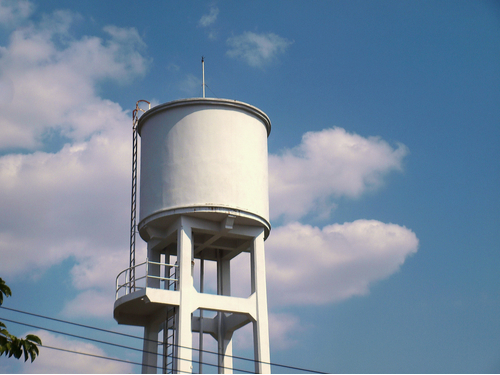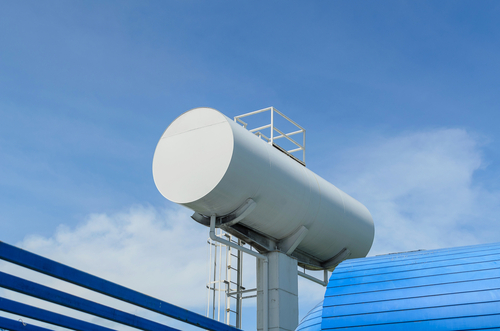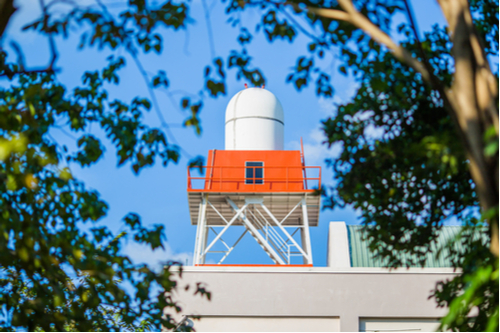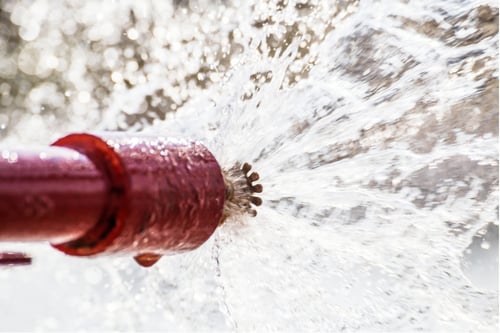Suction Tanks
Our suctions tanks can withstand harsh conditions to last for a lifetime.
We have a record turnaround time for early execution of your project.
We are known for our high-quality installations and trusted by countless clients.

Suction tanks are used by various businesses, industries and residences to maintain a steady supply of water. What is exactly a suction pump?
If you have a factory and need a water supply for that, and there is a river nearby, and you get yourself a pump and make the piping system. In this case, the delivery tank is the factory, and the suction tank is the river. It is as simple as that. In easy words, a suction tank is a reservoir to supply water to any system.
It is a closed container that maintains partial or complete vacuum inside it to be able to draw things into the inlet port.
New York Engineers designs and installs efficient suction tanks for commercial and residential projects maintaining the highest quality and strict standards. We design complete fluid distribution systems with necessary suction tanks, piping, fittings and accessories to deliver an effective water distribution system that never lets you down.
If you are looking to build a suction tank, we invite you to take the help of our experienced engineers and architects.

The suction tank is a tank that is maintained at low internal pressure, i.e., a partial vacuum that is less than the atmospheric pressure. It is to serve the function of a reservoir to provide a vacuum source to those instruments that need a low-pressure source to function.
The working principle of this suction tank is opposite to that of a pressure tank. In a pressure tank system, water pressure is created by using compressed air to push down on the water in a good system.
As the amount of water keeps lowering, the pressure drops and goes below the required amount eventually. The switch then activates requiring the filling of a pressure tank. So as we can tell, a suction tank works by maintaining a low pressure inside the tank, just like the pressure tank works by maintaining a high pressure inside the tank.
The supply pipe that leads up to a suction pump is very large. It is large enough that a full caliber ball cock of the pipe would be exposed to a strain too severe. Thus the large sizes of the supply pipes usually have a manifold header. This lets the inlet to the tank to be supplied automatically through many ball cocks.
The suction pumps that run from the house pump to suction tanks are mostly cross-connected to the street supply. This is done so that in case of an emergency, such as a fire, the water can be pumped from the city mains directly.
We can help you design the right type of suction pump for your project to achieve full functionality and profitability.

Suction pressure is found on water pumps — the unit of measurement meters. The water from your tank goes to the inlet of the pump, and that inlet is the suction area of the pump. Suction pressure is the measure of how much water your pump is capable of sucking through that inlet. Many pumps will specify suction lifts. This indicates how far down your water pump can lift water from.
If you compare the position of your pump to the location of your tank, the suction pressure is important. All pumps must be able to take water in, or they will not be able to pump water. That will make your suction tank go dysfunctional.
We plan and design suction tanks with optimum pressurization so that they can distribute water without any problems.
If the large steam pumps were allowed to take water from the city mains directly, like the ones that are used for the fire pumps or to fill the house tanks that are located on tall buildings, they would cause a massive annoyance. Why?
Because when they would extract water from the city mains, they would reduce pressure in other supply systems of the neighborhood. Moreover, the operation of such pumps may also be the reason for water ram in the city mains, that will not only cause a significant amount of damage to the water supply system but will also be extremely annoying to other water consumers.
Due to these reasons, and also to be able to store enough water to provide when an unexpected shut down of the city mains happen, suction tanks are to be provided in all the large buildings.
We design and install optimum suction tanks that are safe to use and don't hamper the neighborhood water supply.
Suction tanks are usually made up of steel, and the standard size of them ranges from 50,000 to 1,000,000 gallons. Sometimes, in places where the water may freeze due to the temperature, the tanks feature circulated heated water. We also use embedded coils to prevent freezing.
They usually have an open steel tank that is covered with wooden planking. Sometimes, they may also be enclosed and rectangular, also made of steel, with a manhole as well a hinged cover. This manhole provides access to the inside of the tank.
Different Types of Suction Tanks
House tanks are used to store water for the sake of supplying it to the buildings. These tanks must be located at least ten feet above the highest fixture that is to be supplied with water from that tank. The two main kinds of tanks that are used most commonly are wooden tanks and iron tanks.
The wooden tanks are used when the tank is to be placed in a place that is exposed to the atmosphere, like outside the building or on the roof. However, the iron tanks are placed inside the building. The wooden tanks are further divided into two categories, lead-lined, and copper lined wooden tanks.
We help you design and install all types of suction tanks with efficiency and quality.
Iron Suction Tanks : Iron tanks are for placing inside the buildings. One thing that is to be taken care of is that, during summers, the temperature is hot, and the moisture tends to condense on the outside of the walls of the iron tank. If it is not properly attended to, the water will drip down and cause unnecessary puddles and will damage both the floor and the ceiling below.
To prevent this from happening, we recommend placing a drip pan underneath every suction tank.
Lead-lined Wooden Suction Tanks : Lead-lined wooden tanks were used before and now they are not so common. Why?
They owe to the liability of sulfates or carbonates to be dissolved in the water. This poisons the water, especially in the places where soft water is placed inside the tanks. So, the lead lining is only used to a limited extent, but the lead is not used to line the tanks, especially where water is soft.
Copper Lined Wooden Tanks : We don't use copper lining in our design commonly for many reasons. From a chemical point of view, they are not as harmful as the lead-lined suction tanks, particularly when the copper is tinned. However, copper linings are likely to present seams and joints, which pose the risk of leakage.
In some kinds of water, the soldered copper joints tend to disintegrate rapidly, which in turn, causes galvanic or chemical action of the metals.
Here, we are going to consider buildings that are extremely high. In such buildings, the fixtures that require water supply are given water supply directly from the street mains. The fixtures on upper floors receive water from the tanks that are installed on the top, for example on the roof.
In the middle, we install the tanks in such a way that no more than eight floors receive water from the same tank. In these kinds of installations, the housing supply from the roof tanks must be cross-connected to the housing supply coming to form all the tanks in between, and also on the floor.
We do this so that in case of an emergency, the entire building can be supplied with water that comes from the house tank, which can easily be filled by pumping water from the suction tank.
Overflow Pipes : The suction tanks must have a system of overflow pipes that can hold a sufficient amount of water to safely carry the largest amount of water that is estimated to be discharged by the tank. The safest rule to determine the size of the overflow pipe is to make its diameter double than that of the supply pipe, or its cross-sectional area four times than that of the supply pipe.
The overflow pipes from the tanks that are located on top of the buildings can be discharged onto the roof. However, the overflow pipes from the tanks that are present inside of the buildings must discharge water into water supplied and properly tapped sink. They must not, under any circumstance, connect to the drainage system directly.
The general size of the suction tank is dependent upon the number of people the water needs to be supplied to. They must have a storage capacity that is sufficient for a day’s supply, to rule over the possibility of any breakdown or failure that might cause an emergency.
If such a case is encountered, at least one day of water supply must be present inside the tanks. To figure out the capacity of tanks, they should hold no more water than 100 gallons for hospitals, hotels, public institutions, and apartment houses.
We can help you determine the right size of suction tank based on your objectives, application and number of occupants. Industrial applications commonly need bigger tanks to support the operations.
Arrangement of Pipes : Here is a general overview of the arrangement of pipes and pipe connections we design for suction tanks.
The emptying or cleanout pipe is supposed to be valved and is connected to the overflow pipe. The housing supply is a few inches above the base of the tank to prevent the sediment from entering the pipe. There is the valve that controls the housing supply, and below that, a vent pipe is connected to enable the air to enter the housing supply. Also, the admittance of the air allows the tank to empty as soon as the valve is shut off.
There exists a vapor or a relief pipe at the highest point in the hot water supply which bends over the tank and in turn, allow the steam to escape. The pump can discharge water into the house tank in a way indicated when the pump is not automatically controlled. However, when it is automatic, the pump pipe is supposed to enter the tank through the base, and it is to be controlled by a balanced float valve.
As mentioned above, a drip pan is to be placed under the tank at all costs, which must extend a few inches towards all sides of the tank. The drip pan collects all the condensed water and discharges it via a waste pipe, and right into the overflow pipe.
When a pipe, that is not automatic, supplies water to the tank, a telltale pipe is supposed to be run from almost about two inches below the overflow pipe and into the engineer’s sink. The water that is flowing through the pipe then indicates to the engineer that the tank is full.

Suction tanks can also supply water for fire pumps, and that is a good source of water for sprinkler pipes. Our expert engineers are responsible for the making and placement of the suction tank. They also ensure the size of a tank that is big enough to meet the demands of the sprinkler system for the amount of time that the sprinklers are estimated to operate.
We measure the demand of water supply in gallons per minute, and then the duration in minutes as well. If the fire department has a way of tapping into the supply, we will add that volume of water to the size of the tank. If a fire pump pressurizes the system, then the requirement of the pressure of the fire sprinkler system and the use of the fire department are the primary factors that we consider for the selection of the pump.
New York Engineers designs and installs various configurations of suction tanks for commercial, industrial and residential purposes. We can determine the right type of tank, size, material, location and piping system you need for your application. Our designers use advanced digital solutions to create high-quality designs without any room for errors.
You can work with us to install our suction tank designs and take help of our recommended contractors for the best results. We employ strict quality control procedures to ensure that all work is performed diligently and presents the highest standards possible.
Contact us today to know more about our suction tank design service.